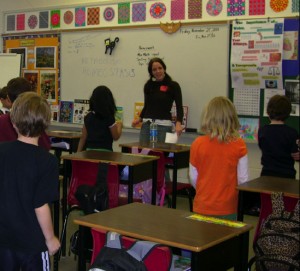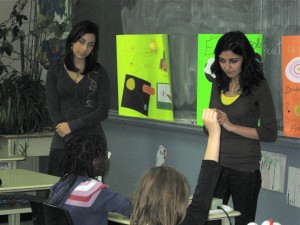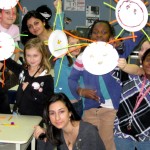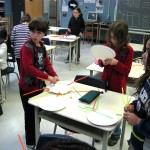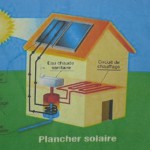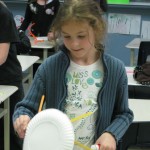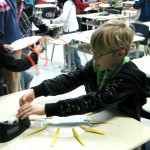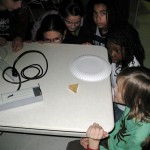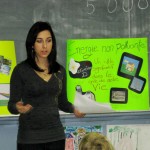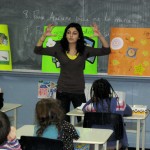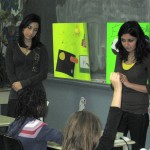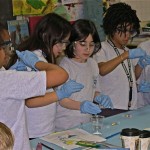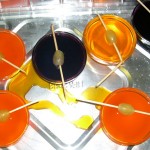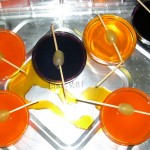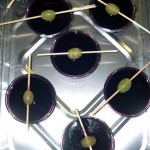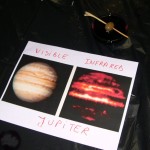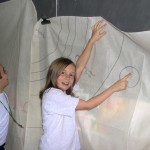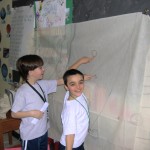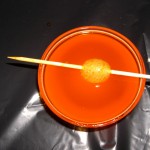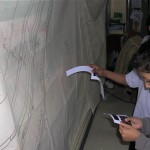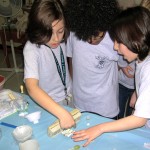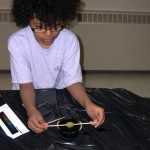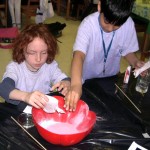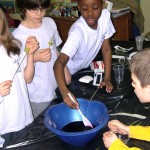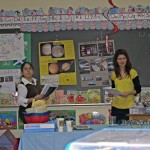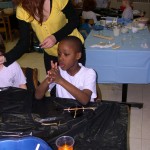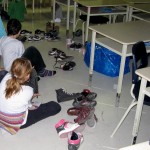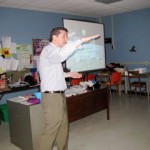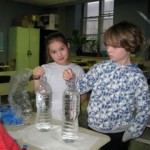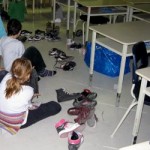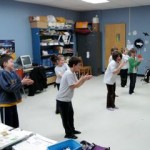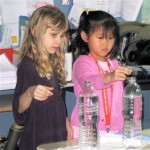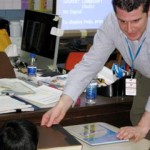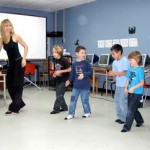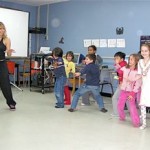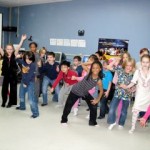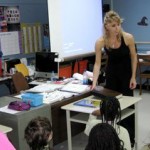Sun
October 11, 2011 in Space
The brilliance of the sun illuminated the minds of Ms Breton’s 3rd grade class at École FACE School on Wednesday the 2nd of December, 2009, thanks to MoL Team Sun Science, Raja Tahan (BSc Biochemistry student, U Montréal) and Tanya Khawam (BSc Biochemistry student, U Montréal). Because the sun is such a large topic, with a diameter of about 1,392,000 kilometres (865,000 mi, about 109 Earths!), Raja and Tanya prepared four posters and lectured and responded to many, many questions about the sun as an energy source, the composition of the sun, the spectroscopy of sun light and general information about the sun. The 3rd graders had already a good understanding of the usefulness of solar energy which some had already seen harnessed to power calculators. They recognized that the sun is an important source of energy on earth needed for plants to grow and make food by photosynthesis. Raja explained that the sun is made mostly of superheated hydrogen gas particles, which collide at the center of the sun, under the intense pressure from gravity, and undergo nuclear fusion producing helium atoms and tremendous amounts of heat and radiation. Tanya discussed how the four seasons and their length depend on the elliptical orbit of the earth, which moves on a tilted axis to its orbital plane around the sun, such that different amounts of sunlight are received at different parts of the planet during the different times of year. The rainbow spectrum of sunlight, which is sometimes seen after a rain storm was mimicked using a prism to diffract a band of white light from a ray box. Like the rain water, the glass of the prism can change the speed of light, which may be refracted at different angles, such that light of different energy leaves the prism as different colors, creating the rainbow effect. Filled with sun energy radiating in a rainbow of colors and given craft materials, the students exhibited their own brilliance and created portraits of the sun. All thanked MoL Team Sun Science for shining their way.
For a visual perspective on size of the sun relative to other planets and stars, see: http://www.rense.com/general72/size.htm
For some educational videos (in English) about the Sun see: http://www.neok12.com/Sun.htm
For Sun basics: http://www.ducksters.com/science/sun.php
For NASA’s view of the Sun: http://nasascience.nasa.gov/kids/kids-sun
Raja and Tanya leading a brilliant discussion about the sun.
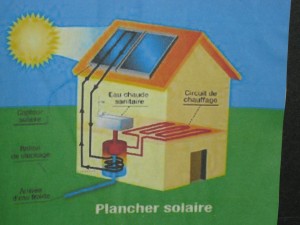
Some uses of solar power.
Replying to questions on the Sun.
Observing the prism diffract white light dispersing it into a rainbow of color.
Crafting our own portraits of the sun.
Letting the MoL Sun shine all over.


